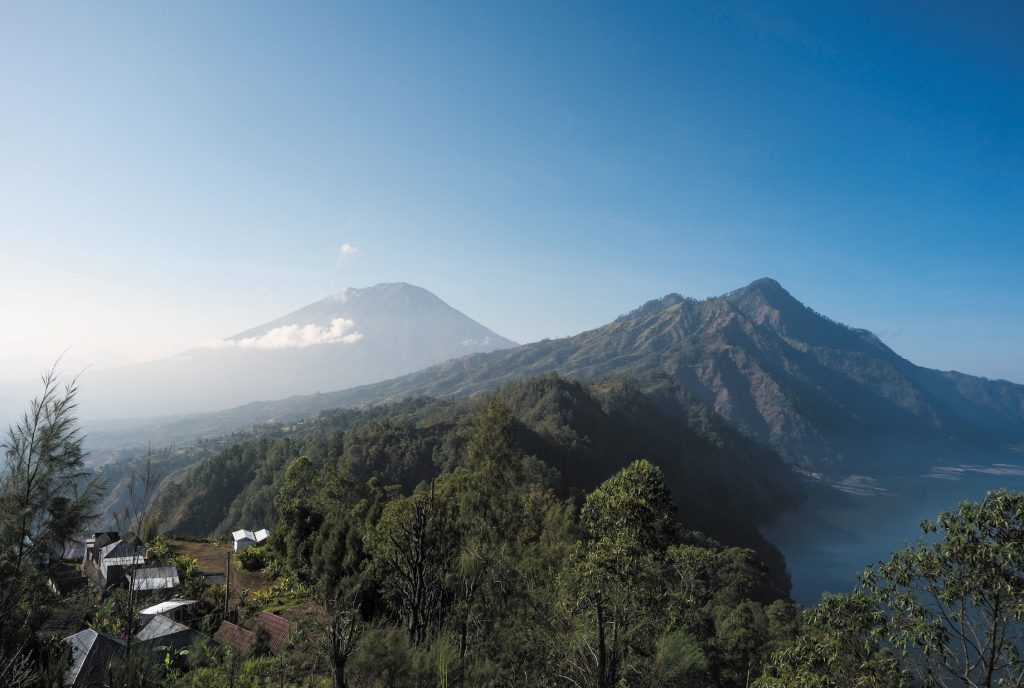
Journey into one of the island’s most remote pockets where straw-coloured valleys stretch beyond the central mountains and down to the north coast. The trekking tour with the Muntigunung Community Development Program is a meaningful and eye-opening experience into the depths of rural Bali, showcasing the artisanal produce made by the local community.
Driving through the flourishing farmlands that occupy the Kintamani basin, it’s hard to imagine that just over the northeast lip of the Batur caldera lies one of Bali’s most dry and arid landscapes. A climatological contrast that for decades left the Muntigunung community marginalised. You’re driven through the basin and then high up the caldera wall to a stunning lookout point. The early 7:30 am start is worth it: a picture-perfect panorama of Bali’s iconic peaks all in line is presented before you, a majestic landscape awash in the soft golden light of the morning.
Here, a colourful spread of local fruits, bread and biscuits is laid out on a table as you are joined by a local guide from Muntigunung, accompanied by a tour leader from the social enterprise. Hot coffee and tea are made and served by a local seller, steaming in the cool mountain air. A one-of-a-kind picnic breakfast surrounded by volcanoes and peaks.
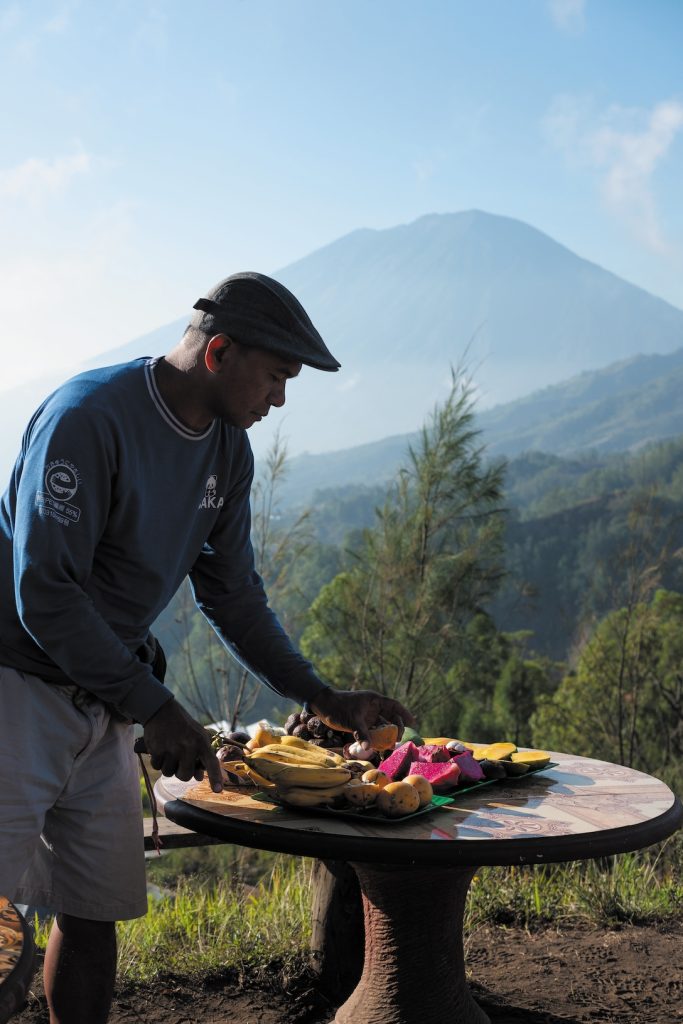
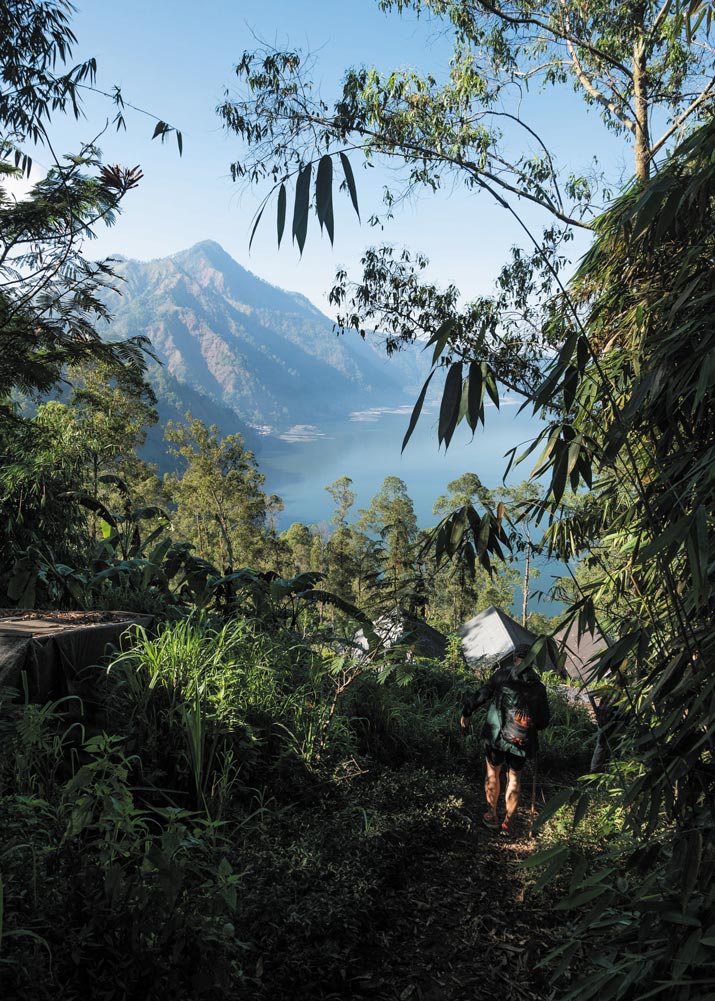
Fuelled and energised, the journey begins. The trail takes you downhill towards the coastline, down the outside face of the caldera. This is not just any path however, it has been purposefully chosen to put walkers into the shoes of the Muntigunung community as it is the same long journey they once had to travel just to collect their daily water.
When Daniel Elber, Founder of Muntigunung Community Development Program (MCDP), first visited the area in 2003, it was considered one of the poorest regions on the island. The topography and surrounding mountains saw that clouds would deposit much of their valuable moisture before reaching these northern slopes, leaving the land and its inhabitants high and dry.
This chronic and localised drought was at the core of the area’s poverty. Especially in the dry season; the lack of rain meant no drinking water let alone agriculture, forcing a daily commute to the banks of Lake Batur, buckets in hand, to collect water. A 10km trip there and back every day, with children and all.
Without this basic necessity, and with so much of their day spent fetching water, the community were plunged into a vicious cycle of poverty. The Muntigunung folk earned the cruel title of the ‘beggars village’, with 90% of the beggars roaming South Bali coming from the area.

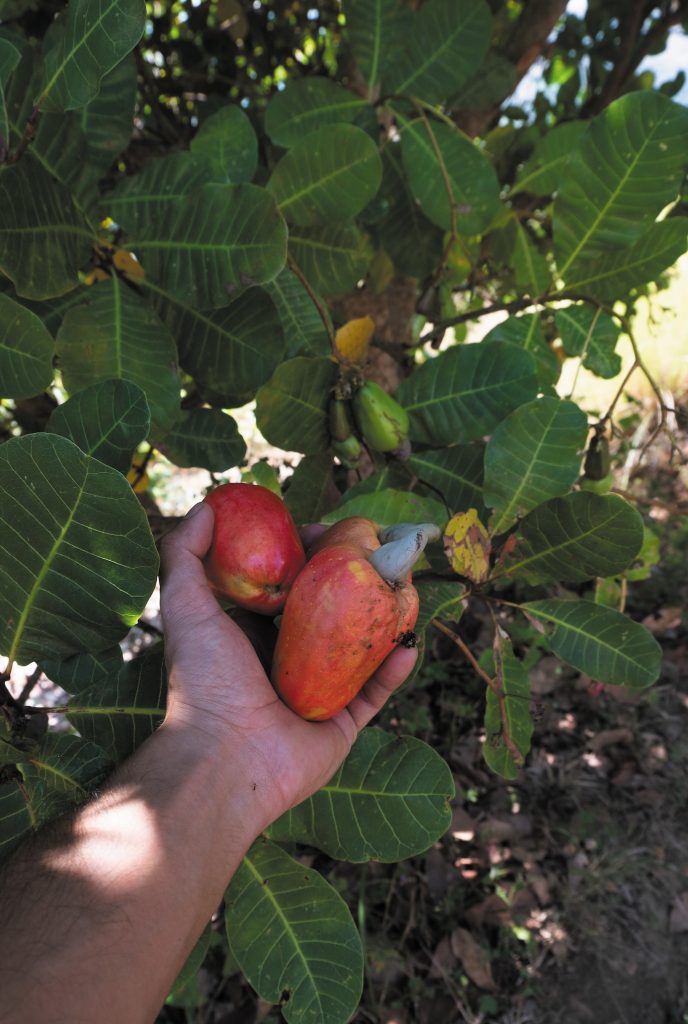
The trek is therefore somewhat of a pilgrimage. Yet, as you walk this water route, it’s impossible not to appreciate the beauty of the surrounding landscape. It is the epitome of the road less travelled, single-path trails that wind along the sides of ridges, overlooking rugged mountain terrain. Valleys dip steeply before you, before rising again in the distance, growing into the impressive slopes that climb up Mt.Abang and Mt.Agung. The path grants a seldom-seen perspective of these towering mountains, their northwest slopes are more gradual in gradient, like dunes growing against the horizon.
As you continue north, the vegetation begins to reveal the hardship of the land. The deep greens of well-nourished flora fade into an ochre and yellow, the earth loose and dusty, as the wealth of water becomes scarce. The thick mountain forests make way for a new environment, a more sparse and arid brushland. Still beautiful in its own way, but not a Bali scene one is used to nor expects. The twisting cashew trees that thrive in the dry begin to sprout along the path, the distinct rank sweetness of the cashew fruits filling the air.
The destination of the trek is one of MCDP’s communal rainwater catchment buildings. There are 39 of these buildings now in the area, helping to provide water to 36 banjars (hamlets) of Muntigunung —these buildings are at the core of the community development for a variety of reasons.
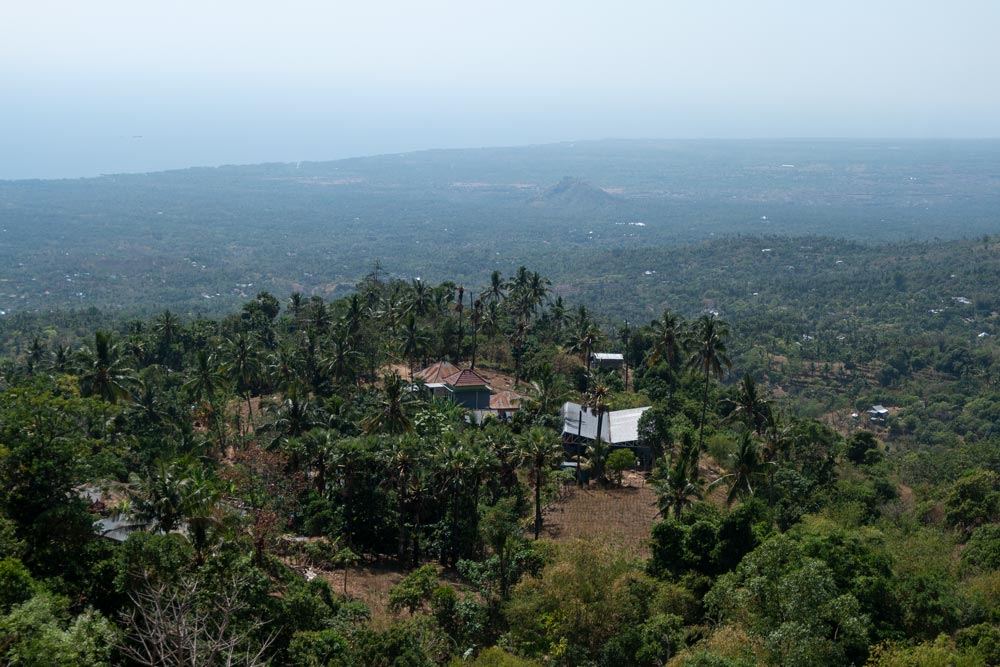
When Daniel sought to help the community, he understood that simply giving money or food would not be the right solution. The issues here were deeply ingrained and required long-term solutions. With the help of Yayasan Dian Desa, a Yogyakarta-based organisation adept in community development in Indonesia, they conducted a 6-month assessment to really get to the crux of what the problems were and what was needed. The research showed many issues: 33% of the population suffered from malnutrition and/or malnourishment, a 9% child mortality rate, low work productivity and school attendance due to their daily 5-hour walks for water. It was a vicious cycle, all of which stemmed from the main factor: lack of water. It was the poisoned spring from whence all other ailments began.
So, MCDP outlined their four main objectives, the first was to solve the water scarcity because without resolving this all other efforts were in vain. Next was to make sure each family had at least one job that provided consistent monthly income, which in turn would also provide good nutrition. Third was to reduce child mortality and fourth was to improve education and school attendance.
Solving the water issue took creativity and ingenuity, as well as a nuanced approach that suited the environment and area. The solution was the creation of rainwater collection buildings: huge, inverted ‘V-shaped’ roofs would collect and divert rain into vast 400.000-litre concrete storage tanks. These would fill up during the rainy season and become the reservoir through the long and difficult dry seasons. This was each banjar’s own reserve, and they would have to decide for themselves how to distribute and organise. They deliver the water, the community does the work. There is enough water now to provide the target of 25 litres per head per day, compared to the previous 10 litres per day for a whole family.



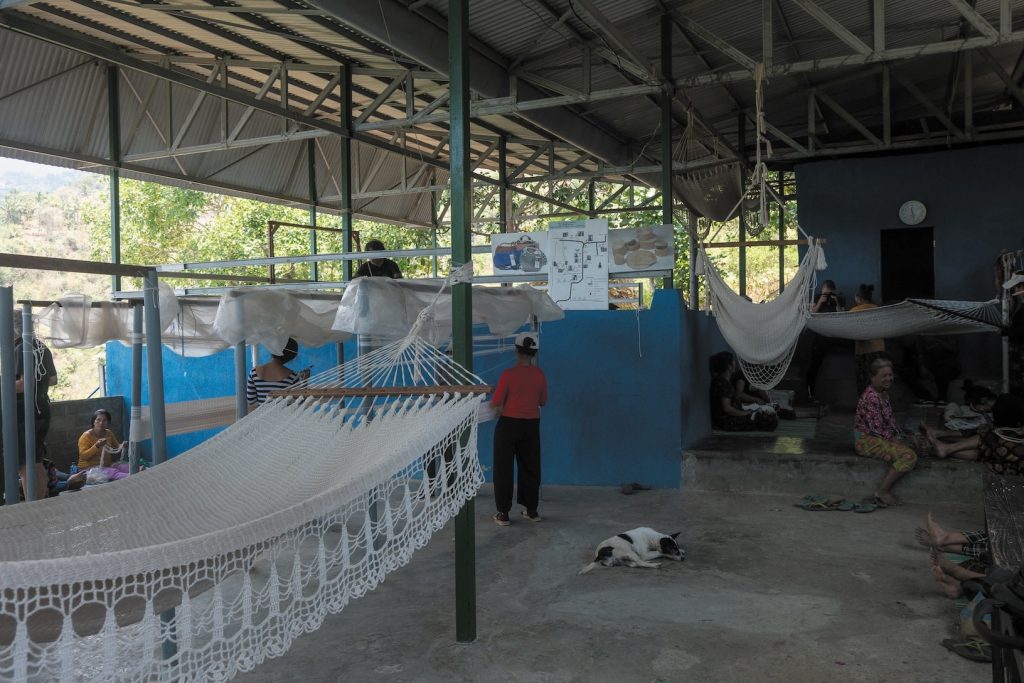
The trek takes you to one of these impressive buildings, and you are welcomed with a refreshing coconut and more fresh fruit, a cherished reprieve after the roughly 2-hour journey. The building is filled with activity. As mentioned, MCDP aims to also provide income for the Muntigunung population, which they do through three pillars: Muntigunung Community Social Enterprise, producing food goods; Muntigunung Community Social Handicrafts Enterprise; and the Muntigunung Trekking.
The water collections are more than just the local reservoirs. They have been designed so that the community can utilise them as meeting points, schoolhouses, training centres, etc. However, seven sites have doubled to become work areas for the community, making handicrafts for the social enterprise to sell.
Some weave intricate lontar leaf baskets and packaging, others make naturally dyed batik textiles, and perhaps most unique are the beautifully handcrafted rope hammocks. It is predominantly women who are working here, an intergenerational group, with grandmothers and children all part of the mix. In a previous life, many would have been begging to make ends meet. Now they are proudly working for their keep, reinvigorated with the self-confidence and dignity that the drought-conditions robbed them of.
“You can see that just with a little bit of work, there is immense happiness. They all want to make their own living,” Daniel Elber shares with NOW! Bali as he beams, looking around the room of giggling basket weavers.

Having seen the workshops, the trekking part of the experience is over and you are taken to the ‘Development Center’ where much of the processing of the food Social Enterprise takes place. Here, ladies are busy preparing cashews — deshelling, cleaning, cutting, all by hand. The cashews are processed alongside the social enterprise’s other produce: sea salt, rosella, palm sugar, moringa. Having seen the impressive little operation, trekkers can have a taste of the cool rosella tea, flavoured cashews and dried fruits. All artisanal, all delicious.
The foundation has donated over 500,000 trees over 10 years: drought-resilient cash crops (cashew, lontar palms, teak, bamboo and moringa) that are now being farmed to make a living. All of the raw materials for the social enterprise are bought from the surrounding 700 farmers to improve income, and the enterprise employs 200 people to work on handicrafts, food and trekking.

“Whilst we have a business model, we do not think like a business,” explains Daniel, the ex-Swiss Banker. “Our focus is on employment. Our goal is to make jobs, not money. We need to make sure everyone has work to do.” Thus, the development program’s main aim now is to sell the goods produced or ensure guests are joining the treks. This is all done to continue, or even to grow, employment in the area. “It’s also about a behavioural and psychological change — a mindset. It’s long-term, intergenerational change, children will see their parents work, not beg.”
It has been twenty years since Daniel first visited the area, and in that time both malnourishment and child mortality have dropped to 0%; 90% of the population have been registered with the government (giving them access to public healthcare); and everyone has water. 800 families receive a direct impact from at least one of the three social programs running.
“It’s wonderful to walk over the mountains to see that this is really working,” Daniel reflects. In its own right, the Muntigunung Trekking experience is something special and well-curated. To give each guest a sense of authenticity, they only run two trips a day. This means they are never overcapacity, and groups can travel at their own pace, taking in the mountainside views or speaking to the community. The low quantity is aimed at maintaining the charm of the area, to not ruin what people are invited to see and experience.
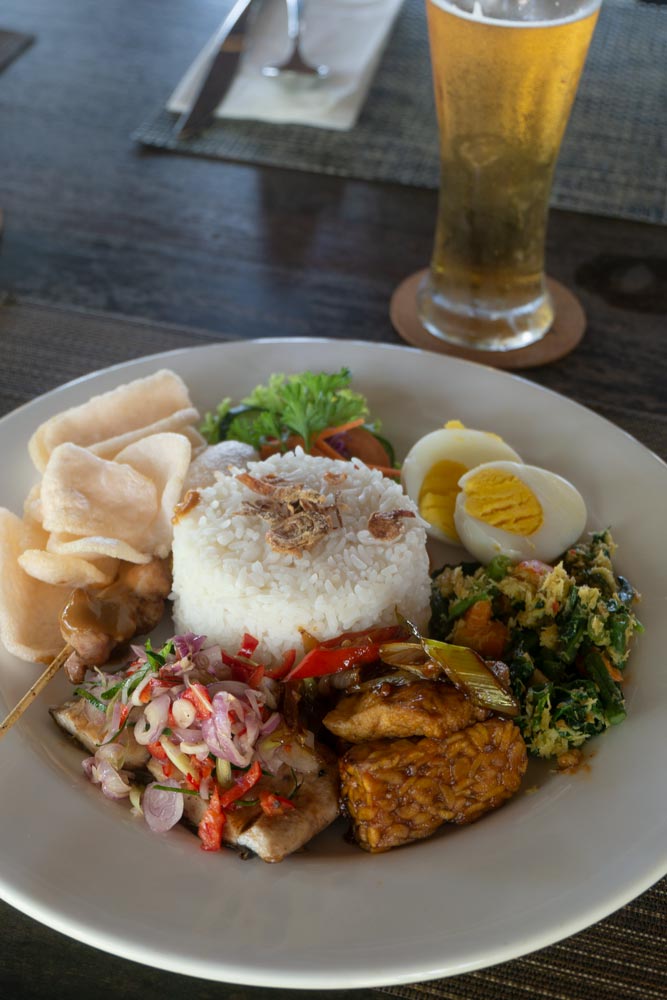
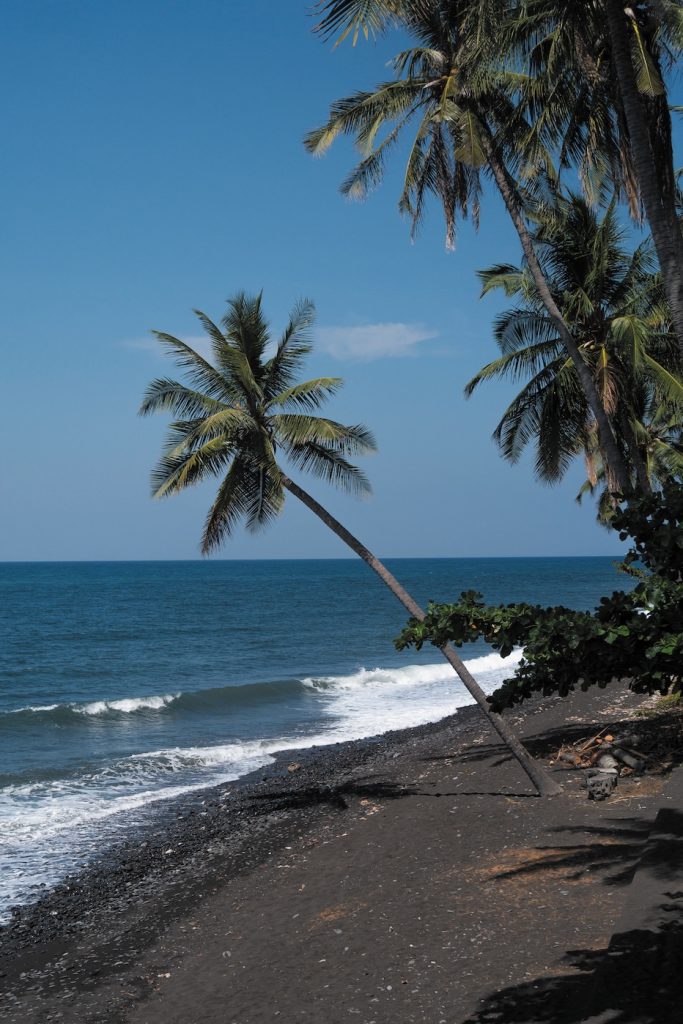
The trek ends with a serene seaside lunch in a quaint hotel in Tianyar, yet again introducing guests to a part of Bali that is seldom seen and enjoyed. The quiet black sand beach invites for a cooling off of feet after the day’s long walk, satisfied not only having enjoyed the great outdoors of Bali but also knowing that the experience will contribute directly to the community.
Practical Information
The Muntigunung Trekking offers both moderate and light paths. Both require a good level of fitness and being mainly downhill routes can be difficult for those with knee pain. Good footwear is advised, as well as sun protection as the area is hot.
The trek includes breakfast, lunch and transportation, and pick up points are very early in the morning (5am from South Bali, 6am from Ubud). Trekking requires a minimum of 2 persons per group.
Individuals and businesses can support Muntigunung even without going trekking as their products are available for purchase. Consider buying their snacks and food goods available in select shops, or even for corporate gifts, hospitality use and more.
For information about trekking: +62 812 4697 0202 (WA) | muntigunungtrekking@gmail.com
Muntigunung Community Development Program
+62 361 424619
info@muntigunung.com
muntigunung.com







